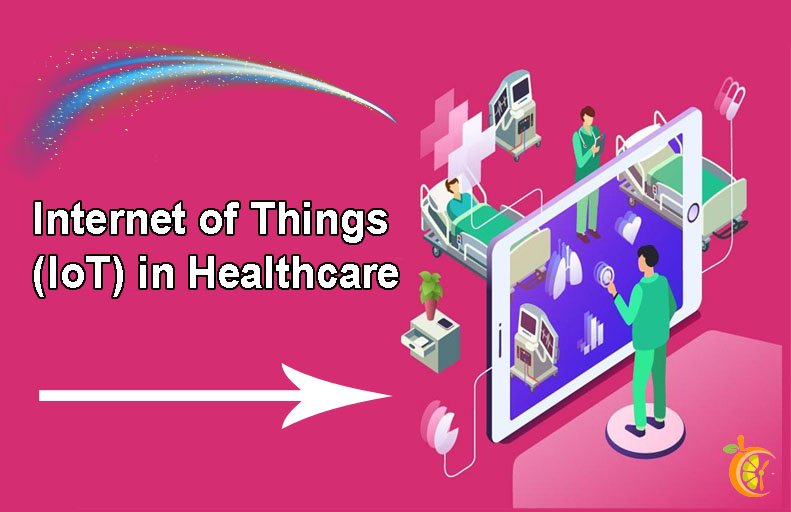The Internet of Things has transformed healthcare. A network of devices, sensors, and software that collects and communicates real-time data enhances patient care and healthcare system efficiency. With IoT devices and technology, patient care is being transformed in remarkable ways; it enhances efficiency and also improves accuracy, which helps to deliver the best results and fast patient recovery. The potential growth of the healthcare sector is unlocked by IoT-enabled smart and connected solutions, including smart sensors, wearable technology, and smart health monitoring systems. By implementing effective health tracking, they will enhance the treatment. In this blog post, we will explore how internet of things in transforming patient care in healthcare centers.
How the Internet of Things in Healthcare Is Transforming Patient Care
Here are some examples that show the Internet of Things in healthcare is transforming patient care:
Remote Monitoring of Patients
One of the most important changes carried by IoT in healthcare is remote patient monitoring. With IoT devices such as wearable sensors, doctors and healthcare providers can monitor patients’ vital signs, activity levels, and even medication observance from a distance. It helps to detect any potential issues regarding patient health and timely intervention, without the need for everyday visits to the hospital or clinic. IoT devices, such as wearable sensors, can track blood pressure, heart rate, and sleep patterns. This helps the healthcare professionals to monitor patients remotely. Researchers can track a patient’s health using wearable sensors, which enables them to spot major abnormalities before they worsen. They can increase the precision of clinical trial findings.
Medication Management
Medication management is another serious aspect of patient care that IoT is transforming. IoT devices, such as smart pill dispensers, can remind patients to take their medications at the right time and in the accurate dosage to maintain their overall well-being. These devices can also send alerts to caretakers or healthcare providers if doses are missed or not taken as prescribed. This improves medication obedience and reduces the risk of adverse reactions or treatment failures. These devices are also cost-saving and very easy to use. They make the patient’s life easier and provide them independence. The data collected by these devices can be analyzed to identify patterns and trends, helping researchers and healthcare professionals gain valuable understandings of disease management and treatment effectiveness.
Improve Facilities for Patients
IoT technology is reforming the patient experience within healthcare facilities. Smart hospital rooms equipped with IoT devices allow patients to control the environment, such as lighting and temperature, and access entertainment options according to their preferences. This personalized and comfortable experience contributes to patient satisfaction and overall well-being. IoT in healthcare also enhances the overall patient experience. This makes a more comfortable and personalized environment for patients during their stay. Additionally, IoT devices can also improve communication between patients and healthcare providers. For example, patients can use smart devices to easily communicate their needs or concerns to nurses or doctors, reducing response times and ensuring timely care.
Reduced Administration Tasks

IoT is also streamlining administrative tasks and improving operational efficiency within healthcare facilities. For example, record management systems powered by IoT can automatically track medical supplies, ensuring adequate stock levels and minimizing wastage. This saves time for healthcare professionals and ensures that crucial supplies are always available when needed. IoT can assist in automating appointment scheduling and patient reminders, reducing the administrative burden on healthcare staff. By integrating IoT devices with electronic health record systems, healthcare facilities can streamline the process of managing patient appointments and send automated reminders to patients.
Chronic Disease Management
Patients with chronic diseases such as diabetes can use IoT-enabled devices to monitor their glucose levels and receive automated alerts when their levels are out of range. This enables timely interventions and helps prevent complications. IoT-enabled devices are used to monitor the patient’s health at home, and they can easily access their health condition without any help. Healthcare providers can access this real-time data and use it to create individualized care plans and modify the course of therapy as necessary. This proactive strategy enhances the general well-being of patients by preventing problems. IoT devices also help in the management of chronic conditions.
Improve The Security
In IoT-enabled healthcare, data security and privacy are two important problems. Healthcare organizations and technology firms are putting strong security measures in place to protect patient data and maintain privacy in response to these worries. These methods include end-to-end encryption and authentication protocols. With the help of these security measures, critical patient data is shielded from risks online and illegal access. Additionally, healthcare systems conduct regular security inspections and updates to identify any vulnerabilities and enhance the overall security infrastructure.
The Bottom Line
IoT in healthcare is transforming patient care by offering remote monitoring, improving chronic disease management, enhancing medication observance, providing personalized experiences, and optimizing administrative tasks. This technology in healthcare brings numerous benefits, ranging from remote patient monitoring and chronic disease management to medication observance and improved patient experience. IoT streamlines administrative tasks in healthcare facilities, automating supplies, appointment scheduling, and reminders. It also improves security and privacy by implementing encryption and authentication protocols, ensuring patient data protection and regular inspections. As IoT technology continues to advance, the potential for further transformation and improvement in patient care is also becoming huge.


